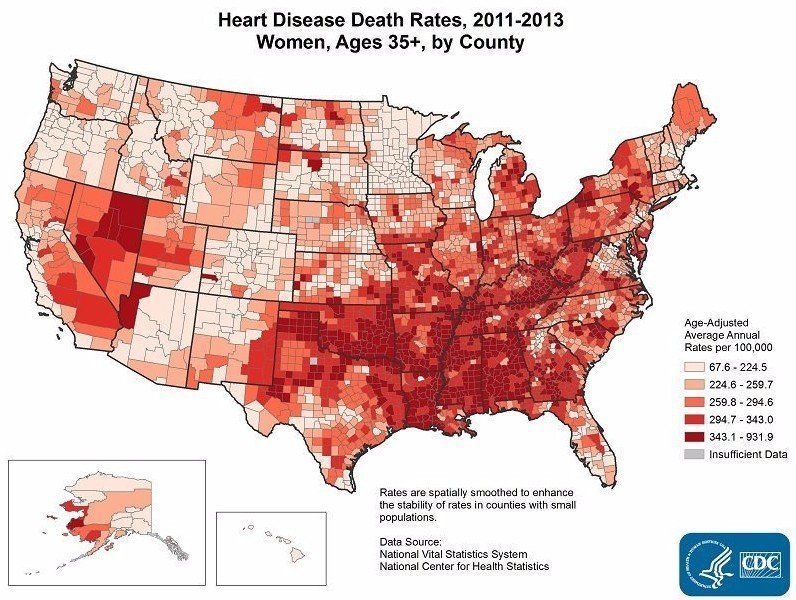Dr. Suzanne Steinbaum is an author of Heart Book: Every Woman’s Guide to a Heart Healthy Life. She is national spokesperson for Go Red for Women of the American Heart Association. She was named to the board of directors of the American Heart Association in New York City in 2014. Dr. Steinbaum has focused on the treatment of heart disease through education, early detection, and prevention. She lectures nationally on women's heart disease and her focus has been on natural and alternative ways of treating heart disease through lifestyle modification, and the prevention of heart disease.
Over the last decade, our understanding of women’s heart disease has improved exponentially, and it has become apparent that heart disease affects men and women in different ways. Here are some facts about heart disease in women
(1,2,3)
:
- Heart disease is the number 1 cause of death in women
- 1 in 3 women will die of a heart attack or stroke
- Heart disease causes more deaths in women than all forms of cancer combined
- Two-thirds of women with heart disease report no symptoms prior to a heart attack
- Almost half of African-American women over the age of 20 have heart disease
- 90% of all women have 1 or more risk factors for heart disease and stroke
Women have been traditionally
under-served by current standards for diagnosis and treatment of heart disease. This is due to the different nature of progression of disease between the sexes. Women are less likely to show significant plaque in the large vessels on the surface of the heart, or obstructive coronary artery disease (O-CAD), then men. However, women have higher event rates and a higher lifetime risk than men
(1) . This is because women have a higher prevalence of small vessel, or microvascular, disease that is not identified with traditional imaging modalities
(5). In one study, 91% of females with multiple risk factors and symptoms did not show any abnormalities on traditional nuclear stress testing
(6) . When heart disease is under-diagnosed, it is under-treated resulting in missed opportunities to improve care before heart attacks, heart failure and strokes. CPET provides detailed physiologic assessment of cardiovascular function that is a function of all mechanisms of heart disease. This means CPET can identify an abnormal response from large or small vessel disease, or a combination of both. Early identification of cardiovascular impairment allows doctors to prevent events and reduce symptoms.
Women are also less likely to experience the traditional symptoms of chest pain as men do. Women are more likely to experience shortness of breath, flu-like symptoms, upper back or jaw pressure, palpitations, heartburn or extreme fatigue
(4)
. This means women are more likely to incorrectly perceive these symptoms as not being related to their heart. CPET is the gold standard assessment for unexplained symptoms of exercise intolerance and is the most accurate method of determining whether they are from a cardiac or pulmonary abnormality, or related to obesity and deconditioning. CPET should be the cornerstone of all assessments for women’s heart disease because of the high degree of accuracy in detecting cardiac abnormalities from all mechanisms. With serial testing, we can track progression of the disease and response to therapy. The goal in every heart disease patient is to increase exercise capacity from baseline as every 1 ml/kg/min increase in exercise capacity (peak VO
2
) results in 10% reduction in cardiac mortality in women
(7)
.




